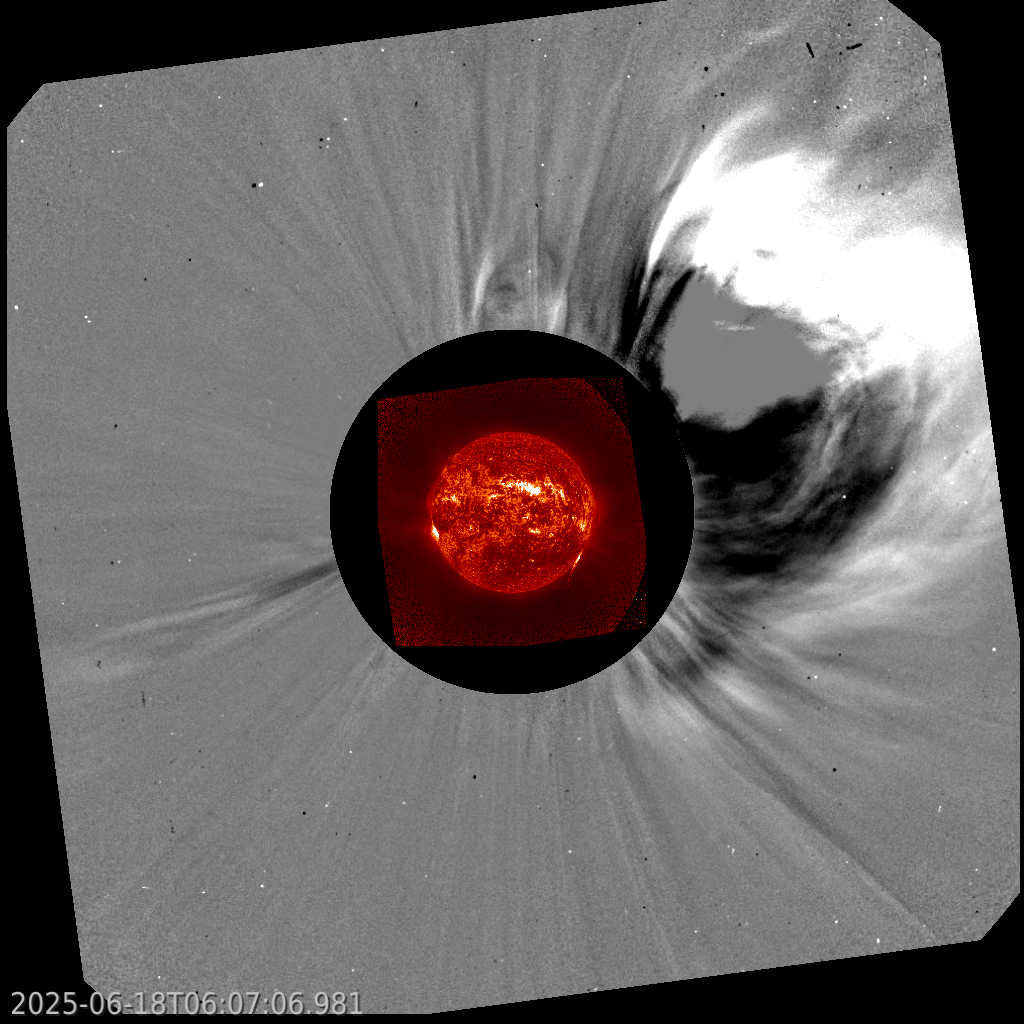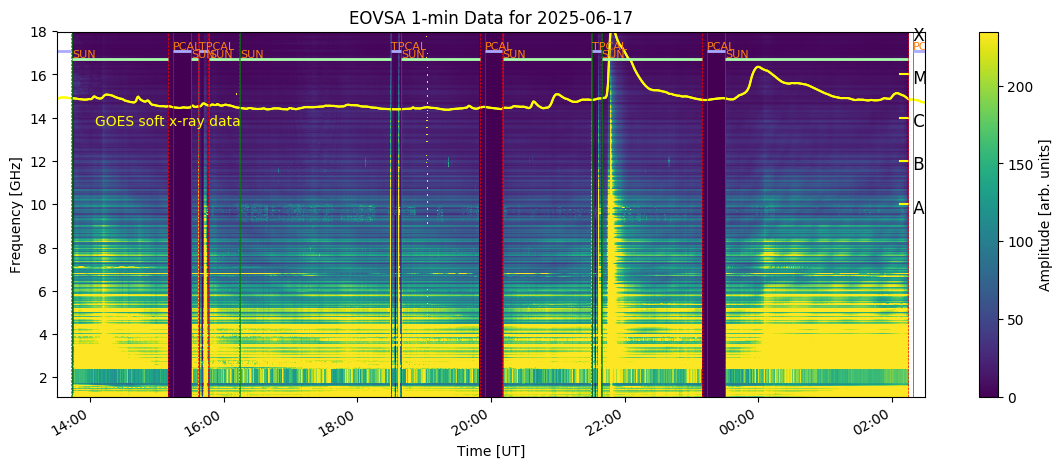UPDATED - For older posts, please scroll down
UPDATE 20 June 2025 at 15:00UTC - SIDC Sunspot Group 523 (NOAA Active Region 4114) produced its second X-class event in 3 days. The SIDC space weather forecaster wrote the following: "A X1.9 flare ... was observed in the GOES soft x-ray flux data with ... peak time at 23:50 UTC ... on June 19. The flare is associated with SIDC Sunspot Group 523 (NOAA Active Region 4114), ... No proton event has been associated with the flaring activity and no coronal mass ejection (CME) is observed in the available coronagraph data. ... The region has meanwhile decreased its underlying magnetic field complexity and is currently classified as magnetic type beta-gamma. ... M-class flaring related to this region is likely with small chances for more X-class flaring." The flare was also very similar in radio emission as the first X-class event (OVSA radio sprectrogram) and may have affected the lower frequency range of HF Com (3-30 MHz) over the Pacific Ocean.
The X1.9 flare in NOAA 4114 was preceded by a C4.4 flare in NOAA 4116 at 21:34 UTC, apparently destabilizing a nearby solid filament. The subsequent eruption of the filament was slow and already in progress at the time of the X-class flare. This can be seen in this composition from H-alpha images recorded by the Big Bear Solar Observatory (NSO/GONG). In extreme ultraviolet (EUV) images at 30.4 nm recorded with the wide-field GOES/SUVI instrument, the eruption is much more spectacular. Most of the material fell back to the solar surface, and no obvious CME seems to have been associated with this eruption.

Original 18 June 2025 at 14:48UTC - For the last few days, SIDC Sunspot Group 523 (NOAA Active Region 4114) has been the largest and most complex active region on the visible solar disk. It has been the source of several low- and high-level M-class ("medium") flares. Finally, late on 17 June, this sunspot group produced an X1.2 flare ("eXtreme") peaking at 21:49 UTC (GOES). The extreme ultraviolet (EUV) imagery (SDO / AIA1700) underneath first shows the flare and its location with respect to NOAA 4114. The flare does not occur over the large sunspots, but over the middle portion where small sunspot of opposite magnetic polarities were present. This middle portion is gradually loosening up, but the magnetic mixing and some weak delta structures (see the STCE's SWx Classification page) are still there.

In the second EUV clip, AIA 171 imagery is overlaid on top of the AIA 1700, thus combining respectively the position and evolution of the coronal loops with the sunspots and the flare location.Interestingly, the coronal loops are not disturbed and no other post-flare coronal loops can be seen developing following the X-class event. This is indicative that there was no coronal mass ejection (CME) associated with this event. The small eruption in the trailing portion of SIDC Sunspot Group 522 (NOAA Active Region 4115) to the east ("left") of NOAA 4114 and that took place about 20-30 minutes later, did not contribute significantly to the X-class event which was already over by then.

The clip underneath (19 June: removed due to technical error) combines GOES/SUVI 304 imagery with coronagraphic images by SOHO/LASCO C2. The former provides a better EUV view of eruptions at low temperatures of about 80,000 degrees, the latter shows in white light any coronal mass ejections associated with these eruptions. In this clip, difference images are used, i.e. one image subtracted from the next, to better show any faint CMEs that may be moving around. Clearly, there's no CME associated with the X-class event, as also concluded by the SIDC space weather forecaster. The two prominent CMEs moving to the west result from activity on the Sun's far side. In particular the wide ("partial halo") CME early on 18 June is related to activity in NOAA 4105, as captured by the STEREO-A/EUVI instrument (EUVI 195 image). That region was the source of several M-class flares while it was transiting the earth-facing solar disk. While it has rounded the Sun's west limb already well over 2 days ago, it's still very active.

No proton event has been observed, with the greater than 10 MeV proton flux remaining at background levels (GOES). Enhancement of the radio flux at various frequencies has been observed, especially in the UHF (0.3 - 3 GHz) and SHF (3 - 30 G Hz) bands. The radiospectrogram underneath was obtained by the Owens Valley Solar Arrays (OVSA) and shows the brief burst affecting the UHF/SHF frequency range around 21:50 UTC. The horizontal axis represents time, the vertical axis is the frequency, with the highest values on top. The GOES soft x-ray curve (yellow curve) has been superimposed.

The X-class flare affected the lower frequency portion of the High Frequency communication band (HF Com ; 3 - 30 MHz) mainly over Hawaii and the central portion of the Pacific Ocean. An advisory to civil aviation has been issued (PECASUS). The effects of the X1 flare on HF Com can be seen in the D-RAP map underneath (NOAA/SWPC). The SIDC forecaster expects further M-class flaring from this and other active regions during the next few days.






